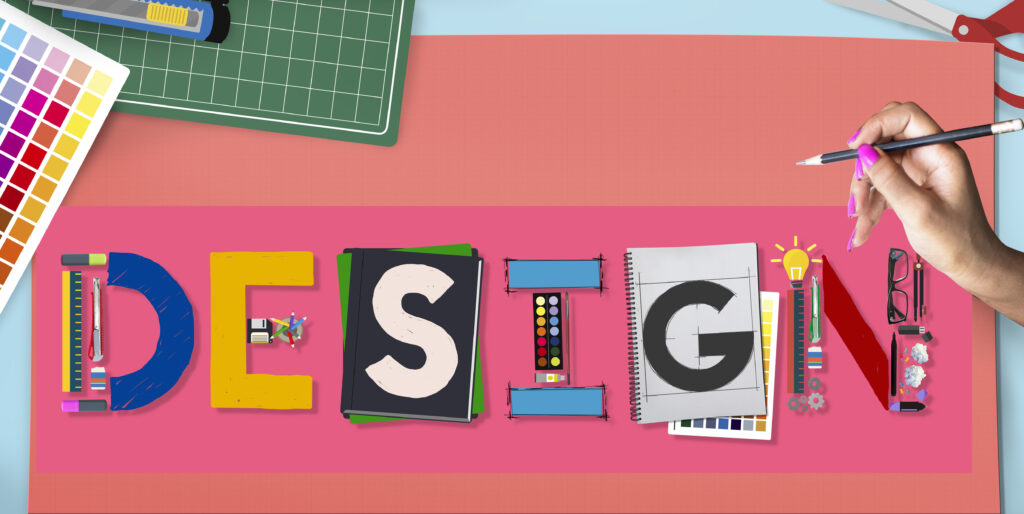Debunking 6 Common Myths about Graphic Design
A picture is worth a thousand words—a notion that has never been more true than in our current digital age. Graphic design is easily accessible nowadays thanks to the diversity of platforms like Vista Create and others like it. It has become an important part of putting ideas into pictures, making a brand more valuable, and getting people to notice marketing campaigns. Despite its significance, there are many misconceptions about this creative field. In this blog, we will uncover and debunk some of the most common myths about graphic design. Whether you are a designer or a business owner, understanding these mistaken beliefs will ultimately help you create more compelling visuals.

Myth #1: Anyone with a Computer Can Be a Graphic Designer
Even though many people have access to design tools because of modern technology, that does not mean they are all professional graphic designers. Graphic design is a complicated process, requiring you to know much about colors, typography, layout, composition, and other crucial things. There are some important points to excelling in this field, such as:
- a keen eye for detail;
- artistic ability;
- constant learning.
In fact, claiming that anyone with a computer can master graphic design is akin to saying that having a paintbrush makes someone an accomplished painter.
Myth #2: Graphic Design Is Just about Making Things Look Pretty
Many people assume that the primary role of graphic design is to create aesthetically appealing visuals. While appearance is undoubtedly a crucial aspect, it only accounts for a fraction of what a professional graphic designer does. Their primary goal is to get a message across clearly, using visuals to convey complex ideas and help the viewer make a meaningful connection. As such, understanding the target audience, their preferences, and the intended message is just as critical as mastering the visual elements.
Myth #3: Simpler Designs Take Less Time to Create
There is a common adage in the design world: “Less is more.” Simple designs are often seen as the most sophisticated because they make it easier for the intended message to get across. However, there is a prevalent misconception that creating a minimalist design takes less effort and time. The truth is that achieving simplicity can be a remarkably complicated process. It requires a firm grasp of design principles, a clear idea of the message you want to send, and an excellent ability to edit.
Myth #4: Templates Are a Professional Designer’s Best Friend
Templates can be very helpful for amateurs or individuals lacking sufficient knowledge of design principles. However, the over reliance on templates can hinder creativity and originality. Professional designers know that every project is different and needs a unique solution to meet the needs of the project’s goals and audience.
All in all, using templates as the foundation of design work can be a great idea, but they must be appropriately selected, tailored to the whole project, and professionally customized. Otherwise, their usage could lead to stagnated creativity and a loss of individuality in the final result.
Myth #5: Copying Successful Designs is an Acceptable Practice
The internet is undoubtedly a treasure trove of inspiration for designers. However, there is a fine line between seeking inspiration and plagiarizing. Copying another designer’s work is not only unethical but could also lead to legal ramifications. Becoming a professional in the field implies establishing your unique style and coming up with innovative ideas to set yourself apart. By doing so, you build credibility and create a recognizable brand—both for yourself and your clients.
Myth #6: Designer’s Job Is to Create What the Client Wants
While working closely with clients is vital to producing a successful design, it is crucial to recognize that graphic designers are not mere order-takers. They possess knowledge, experience, skills, and expertise that clients often do not. As such, it is essential for professional creators to offer valuable input and guide the design process effectively. A collaborative relationship between the performer and the client is the key to developing a successful final product.
Drawing a Conclusion
Graphic design is a multifaceted industry that often gets misinterpreted due to various misconceptions. Understanding its true nature and value is crucial for designers and businesses alike. By debunking and addressing these common myths, we aim to increase awareness and appreciation for the artistry, expertise, and passion that go into every professional graphic design project. So, the next time you encounter these misconceptions, arm yourself with the facts and help others appreciate the value of good design!
